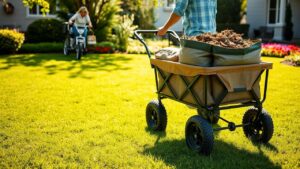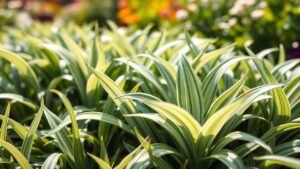🌱 The Gardener’s Timeline: How Long Does Germination Really Take?
For every gardener, from the novice admiring their first seed packet to the seasoned expert planning a large plot, one question unites them all: “How long until my seeds sprout?” This period of waiting is filled with anticipation and marks the critical first step in a plant’s life. Seed germination is the miraculous process where a dormant seed embryo awakens, fueled by moisture and warmth, to begin its journey. It breaks through its protective coat, sending a root down into the soil and a shoot up towards the sun.
There is no single, simple answer to how long this process takes. The timeline can vary dramatically depending on the plant species. Some eager seeds, like radishes, can show signs of life in as little as three to four days. Many common garden vegetables and flowers will typically sprout within one to three weeks, a standard waiting period for most gardeners. However, on the other end of the spectrum, certain seeds—especially those of some perennial flowers, hardy shrubs, or trees—can test a gardener’s patience, taking several months or even requiring specific conditions like a cold period (stratification) to break dormancy.
Understanding this variability is the key to a successful garden. It empowers you to plan your planting schedule effectively, diagnose potential issues if seeds fail to sprout, and manage your own expectations. Factors ranging from the genetic makeup of the seed to the specific environment you provide all play a crucial role in determining whether you’ll see those coveted green shoots in a few days or a few weeks.
Why Sprouting Times Vary: A Look at Seed Diversity
Not all seeds are created equal, and their germination times are a direct reflection of their incredible diversity. Several inherent characteristics of the seed itself play a primary role in this timeline.
First and foremost is the Seed Type. The genetic blueprint of a plant dictates its growth rate from the very beginning. For instance, fast-growing annuals like lettuce and radishes are programmed for speed, often sprouting in under a week to maximize a short growing season. In stark contrast, seeds of plants like parsley, peppers, and lavender require more patience, sometimes taking up to three weeks or more. This slower pace is often an evolutionary trait, waiting for ideal and stable conditions before committing to growth.
The Thickness of the Seed Coat is another significant factor. A seed’s outer shell protects the delicate embryo inside. Some seeds, like beans, have relatively thin coats that soften quickly with water. Others, such as morning glories or nasturtiums, possess thick, tough coats that act as armor. This tough exterior requires more time and consistent moisture to break down, delaying germination. Gardeners can sometimes speed this up through a process called scarification, which involves lightly scratching or nicking the seed coat to allow water to penetrate more easily.
Finally, Seed Age and Viability can impact the timeline. While many seeds can remain viable for years if stored correctly in cool, dark, and dry conditions, their germination power can decline over time. Fresher seeds generally have a higher germination rate and tend to sprout more quickly and vigorously than older seeds. An old packet of seeds might still produce plants, but you may find that fewer seeds sprout and those that do take longer to emerge.
The 4 Essential Factors That Control Germination
While you can’t alter a seed’s genetic code, you have immense control over its environment. Providing the ideal conditions is your most important job during this phase. Four key factors govern the speed and success of germination.
1. Water (Moisture): Water is the catalyst that awakens a dormant seed. It permeates the seed coat, rehydrating the embryo and activating the enzymes necessary for growth. The soil should be consistently moist, like a wrung-out sponge, but never waterlogged. Too much water can suffocate the seed by filling all the air pockets in the soil, preventing access to the next essential element: oxygen.
2. Temperature: Every seed type has an optimal soil temperature range for germination. This is arguably the most critical and often overlooked factor. Cool-season crops like spinach and peas can germinate in soil as cool as 40°F (4°C), while warm-season crops like tomatoes, peppers, and corn demand much warmer soil, typically between 70-85°F (21-29°C). Using a soil thermometer and a seedling heat mat can dramatically increase germination rates and speed for heat-loving plants.
3. Oxygen: Just like us, seeds need to breathe. Respiration is the metabolic process that converts the seed’s stored food reserves into energy for growth, and this process requires oxygen. This is why a well-draining, light, and airy seed-starting mix is superior to heavy, compacted garden soil. Overwatering pushes oxygen out of the soil, effectively drowning the seed.
4. Light or Darkness: Light can be a powerful signal for germination, but its effect varies. Some seeds, like lettuce, dill, and many flower varieties, are light-dependent and must be sown on or very near the soil surface to receive the light they need to sprout. Conversely, many other seeds require darkness to germinate and must be buried to the proper depth, as light can inhibit their growth. Always check your seed packet for specific planting depth instructions to meet this need.
A Gardener’s Cheat Sheet: Common Germination Times
To help you plan your planting and know when to expect new arrivals, here is a quick reference guide for some of the most popular garden plants. Remember that these are estimates; your results may vary based on the conditions you provide.
| Plant Type | Name | Estimated Germination Time |
|---|---|---|
| Vegetables | Radishes | 3–7 days |
| Lettuce | 7–10 days | |
| Beans | 7–14 days | |
| Cucumbers | 7–14 days | |
| Tomatoes | 7–14 days | |
| Peppers | 10–21 days | |
| Carrots | 14–21 days | |
| Eggplant | 14–21 days | |
| Herbs | Basil | 5–10 days |
| Cilantro | 7–10 days | |
| Dill | 10–14 days | |
| Parsley | 14–28 days | |
| Rosemary | 14–28 days | |
| Flowers | Marigolds | 5–7 days |
| Sunflowers | 7–10 days | |
| Zinnias | 7–10 days | |
| Cosmos | 7–14 days | |
| Lavender | 14–28 days |
From Sprout to Seedling: Your Next Steps After Germination
Seeing that first green shoot push through the soil is a moment of pure gardening joy, but your work has just begun. Once germination occurs, the plant enters the seedling stage, and its needs change immediately.
First, provide a strong light source. As soon as you see green, your seedlings need intense light for photosynthesis. A south-facing windowsill may be sufficient in some cases, but for the sturdiest, healthiest seedlings, supplemental grow lights are the best option. Without adequate light, seedlings will become “leggy”—tall, thin, and weak—as they stretch desperately for a light source.
Watering remains crucial, but your technique should adapt. The delicate seedlings are susceptible to damping-off, a fungal disease that rots the stem at the soil line. To prevent this, water from the bottom by placing the seedling tray in a pan of water for 15-20 minutes, or use a fine mist to water the soil surface without dislodging the plants. Ensure you have good air circulation by using a small, gentle fan for a few hours a day. This helps strengthen stems and prevents fungal growth.
As your seedlings develop their first set of “true leaves” (the second set of leaves to appear), you may need to thin them out. If you planted multiple seeds per cell, select the strongest-looking seedling and snip the others at the soil line with scissors. This ensures the remaining plant has enough space, nutrients, and light to thrive.
Finally, before they can move to their permanent home in the garden, they must be hardened off. This is the process of gradually acclimating them to outdoor conditions. Over 7-14 days, slowly introduce them to sunlight, wind, and temperature fluctuations, starting with just an hour in a sheltered spot and increasing the duration each day. This vital step prevents transplant shock and prepares your strong seedlings for a successful life in the garden.





